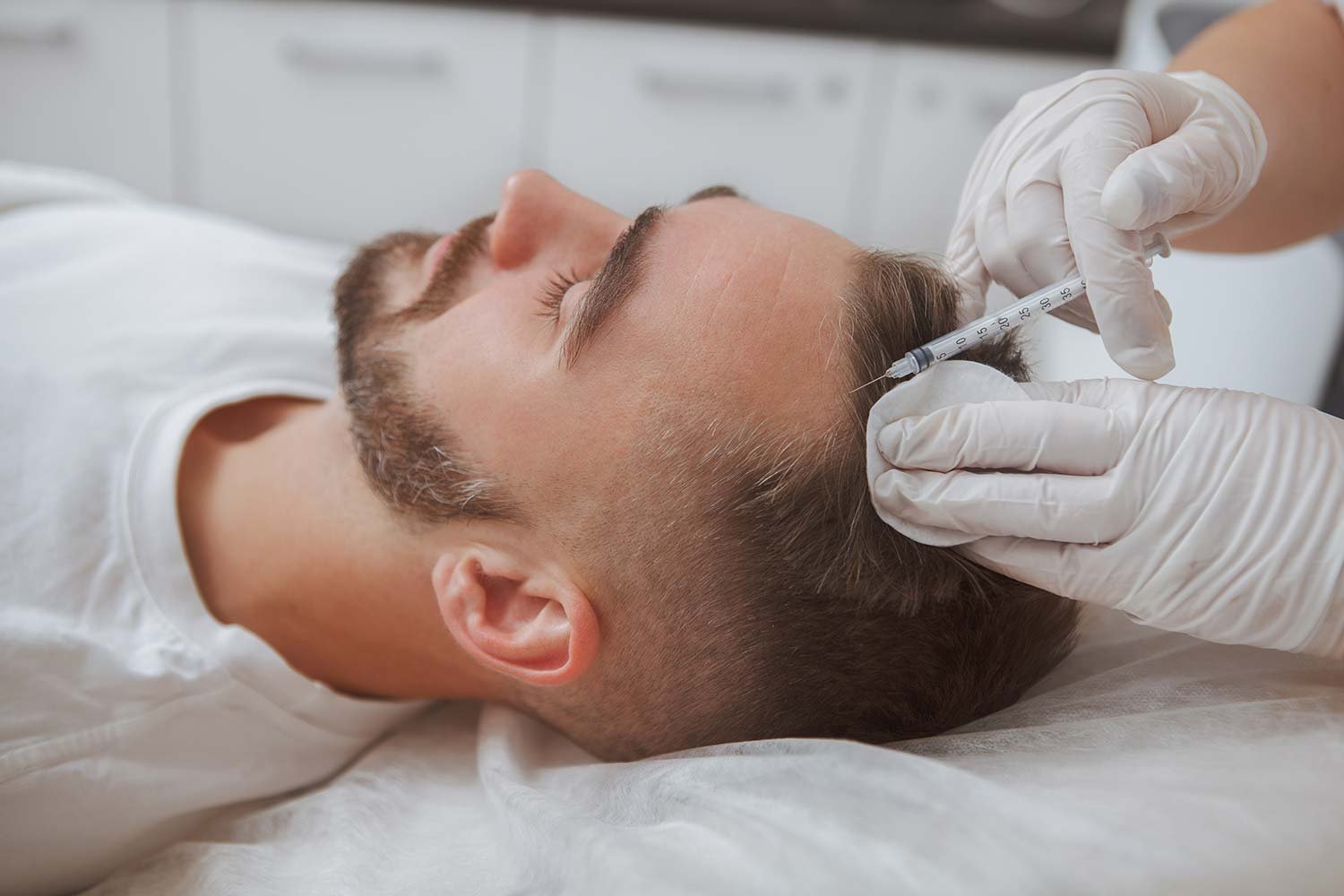Hair loss affects people in different ways. While some will forge forward unmoved, it can be a nightmare for others, causing stress and lowering their self-esteem. For the latter, hair restoration remedies like hair transplants are a godsend.
Still, hair transplant procedures do not come cheap. As such, one of the primary concerns for people considering hair transplants is the longevity of their treatment and investment.
The Natural Growth Cycle of Transplanted Hair:
When you invest in a hair transplant, it’s natural to want excellent results. There is also an eagerness to know what to expect. While you would be forgiven for wanting instant results, hair transplant recovery and re-growing your hair requires some patience.
For one, sustained hair growth typically takes anywhere from 6 months to a year. However, you should begin noticing some changes once the transplant is complete and the grafts settle in.
Still, keep in mind that hair growth is different for each individual.
The hair timeline below gives the typical growth cycle, but yours could be slower or faster than what is outlined here.
Immediately After Surgery
The transplanted grafts should show the outline of your new hairline immediately. You can also expect some scabbing on the scalp as the hair grafts heal.
These should be the size of a pinhead and are not much cause for concern. Some patients will also experience mild pain, swelling, and itching. Your hair transplant expert will discuss infection management to ensure your scalp remains healthy.
5 to 10 Days
Aside from the scabbing and the mild pain easing off, there will be little to no change here. Still, stay on top of your aftercare regimen, as this duration is critical to the transplant’s success.
2 to 3 Weeks
The transplanted hair grafts should begin to shed off now, making your hair look much like it did before the transplant. This is known as shock loss, and this shouldn’t worry you as it’s expected and completely normal.
Shock loss is hair loss around the donor area and the periphery of the transplanted area. This is temporary and happens because of the tissue trauma suffered after the surgery. Depending on how much you are experiencing, your hair transplant professional can suggest several treatments to mitigate hair loss. This can include massaging the area to stimulate oxygen or vasodilator drugs.
4 to 8 Weeks
You can expect to see some hair growth to about 0.5 centimeters in length. If your scalp has fully healed, you can get your first haircut at this point.
4 to 6 Months
The transplant results show themselves at this phase, as the newly transplanted hair begins to grow back. This starts with fine hair and becomes thicker and longer with time. At this point, the hair should grow at about a centimeter every month.
This growth continues steadily as you approach the six-month to one-year mark. The density of the new hair keeps improving, with a significant improvement in hair coverage observed. Though these results are not permanent at this stage, you can begin styling your hair as desired. Still, patients are advised to avoid having their hair buzzed in the first year following the transplant. For haircuts, scissors should do just fine.
1 year to 18 Months
You should see the final results of your transplant after a year as it continues to grow at a rate of 1 to 2 centimeters per month.
At this point, the hair has filled in nicely, looks natural, is thicker longer, and functions like natural hair. We would love to see you at this point to monitor your progress or get an email with your photographs.
Another thing is that younger patients expect faster growth than older ones. Additionally, frontal sections like the hairline grow back faster than the crown because the latter has low blood irrigation.
Let’s look at the life cycle of natural hair.
The Life Cycle Of A Hair Follicle.
The life cycle of your natural hair takes a different route. Most people are surprised at the complexity of the process, and we tend to assume our hair simply ‘just grows.’
The hair growth cycle happens in four stages;
Anagen: Growth Phase
Hair growth begins at the anagen phase, which is the longest of them all, lasting 3 to 5 years for head hair. For some, this phase goes on for as long as seven years.
Hair in the anagen phase will grow about half an inch a month, averaging 12 inches yearly. Your hair follicles during this phase keep pushing out hairs that grow till you chop them off, or they naturally fall off at the end of their lifespan. At any given time, 90% of your hair is in this phase.
Catagen: Transition Phase
The catagen phase begins once the anagen phase ends and lasts about ten days. Here, the hair follicle shrinks, and hair growth slows down. Additionally, the hair separates from the hair follicle but remains in place during the final days of growing.
5% of your hair is in this phase.
Telogen Phase: Resting Phase
The telogen phase typically lasts three months, and 10% to 15% of your hairs are in this phase.
In the telogen phase, new hairs form from follicles that have released hairs in the catagen phase. This phase is known as their resting phase because things slow down quite a bit: hairs don’t grow nor fall off.
Exogen Phase: Shedding
Some experts include this phase in the telogen phase as it’s almost an extension of it. During the exogen phase, hair does shed from the scalp with help from washing and brushing.
It’s normal to lose 50 to 100 hairs daily during this phase.
This phase lasts 2 to 5 months, and new hairs grow into the follicles as some fall off.
Difference between Natural Hair Thinning and The Longevity Of Transplanted Hair.
Natural hair will fall or begin thinning over time. It’s not the same with transplanted hair. Hair transplants are permanent and last a lifetime. Nonetheless, the hair around the transplant area can keep falling out.
However, some people with previous transplants choose to have more transplants over time. This is perfectly okay and does not negate the gains from the initial transplant.
Factors Contributing to Hair Transplant Longevity at Philadelphia Hair Restoration
Hair transplants are generally accepted to be permanent hair loss solutions. However, the results and longevity of the procedure tend to differ from one patient to the next.
While some patients will enjoy the transformation for 15 to 20 years, the procedure lasts a lifetime for some.
Why this discrepancy? The success of a hair transplant is dependent on several factors. Let’s look at what these are.
1. Skilled Professionals
First things first.
A well-trained, experienced surgeon is a prerequisite to the longevity of a hair transplant. Our team at Philadelphia Hair Restoration has 18 years of expertise and a proven track record for successful transplants.
We care for each patient meticulously, from the first consultation to surgery and aftercare. The result is long-lasting and natural-looking results for decades to come.
2. State-of-the-Art Techniques
We offer different transplant techniques, including FUT, FUE, SMP, and PRP.
Learn more about the differences between PRP vs hair transplant methods like FUE.
To serve our esteemed clientele, we have not only learned the best techniques, but we have also invested in cutting-edge technology. These ensure success, client safety, and longevity.
3. Individual Assessment
No two patients are alike. Unfortunately, some hair transplant surgeons ignore this fact and offer standard treatments to every patient. Our system at Philadelphia Hair Restorations is different.
Instead of offering cookie-cutter solutions, we appreciate that each patient coming to our clinic is unique, and so are their needs. To begin the process, we provide a comfortable environment where patients can discuss their concerns and expectations fully and openly with a surgeon. They can ask as many questions as possible, and we strive to answer these and provide as much information as possible. We also try to understand a client’s expectations and discuss the results they can realistically expect.
Because everyone’s hair is different, we assess the hair to see if the grafts in the donor area are of good quality. This is done by evaluating their thickness and the number of follicles per graft.
The surgeon will use this and other information to advise on the best harvesting and implantation techniques to ensure the procedure is done correctly, with minimal upheaval to your scalp, and, most of all, that you get good results that hopefully last a lifetime.
4. Transaction Rate of Hair Follicles
The transaction rate is the damage rate that occurs during a hair transplant surgery. While you, and indeed your surgeon, would wish that all harvested follicles are usable, this is rarely ever the case.
Not all the extracted hair follicles will be usable. If you have too many unusable follicles, the transaction rate is said to be high. This sometimes depends on the surgeon, with highly trained, well-experienced surgeons recording very low transaction rates.
The surgeons at Philadelphia Hair Restoration have enough know-how on;
- How to extract hair follicles from your donor areas
- How to place hair follicles as the extraction process continues
- How to make proper incisions at the correct angles and in the right locations
- Proper hair implantation techniques that ensure the preservation of the hair follicles
Maximizing Your Hair Transplant’s Lifespan
There are also things you can do to help things along and lengthen the lifespan of your transplant.
Aftercare Guidance
We will provide a customized aftercare plan depending on our assessment of each client and the procedure we advise.
It’s essential that you follow your aftercare regime strictly to ensure pain and infection management and to get the most out of your transplant.
Some do’s and don’ts after the procedure include;
- Keep your scalp away from direct sunlight in the first two weeks after the procedure.
- Avoid harsh hair products immediately after the transplant, and use baby shampoo instead.
- Avoid strenuous physical activities for at least two weeks after the procedure.
- If you get medication, use them as prescribed.
- Try to sleep in an upright position with your head elevated for the first few days after the surgery.
- Resist the urge to touch the transplant area.
- Avoid manipulating the transplanted hair and sweating in the two weeks following the transplant.
Healthy Lifestyle Recommendations
Like with your natural hair, healthy lifestyle choices also support the lifespan and health of transplanted hair.
Some tips to ensure a hair transplant stays in top shape include:
- Eating a balanced diet and hydrating
- Avoiding smoking
- Reducing stress and finding good stress management techniques
- Being careful with your scalp when washing and scratching
- Giving your scalp a gentle massage occasionally
Follow-up Appointments
Once your transplant is complete, your surgeon will want to check in with you periodically. In these sessions, they will look out for any problem areas and monitor the progress of your transplant.
Kindly keep all your appointments because this post-operative care is fundamental to the transplant.
Ready For The New You?
When dealing with hair loss issues, it’s imperative that you put the hair restoration process in the right hands. At Philadelphia Hair Restoration, we fully immerse ourselves in knowing everything there is to know about hair transplants. Similarly, we stand by our expertise and commitment to treat each patient with respect and dignity.
In our 18 years of service, we have learned the ropes of hair transplanting and have become a trusted name in the industry for patients looking for lasting solutions.
You might have numerous questions you need answers to before taking the plunge, and that’s perfectly okay. Feel free to call us or book a free consultation, and one of our surgeons will be happy to address your concerns.
Similarly, share this article with friends and family who might be considering or need a hair transplant.



